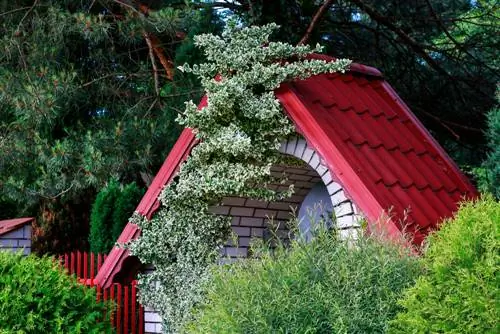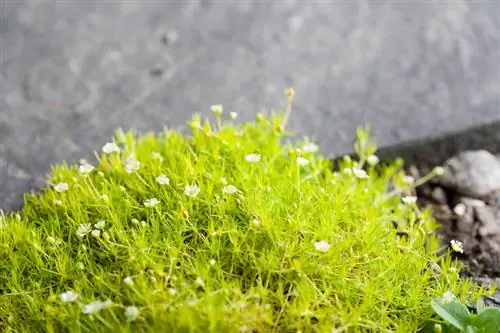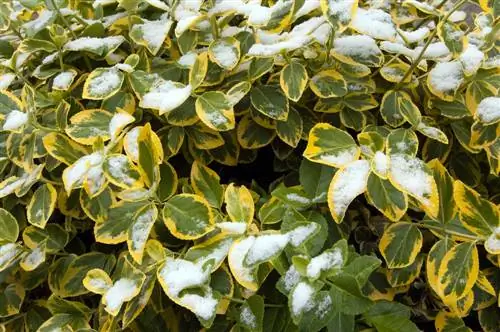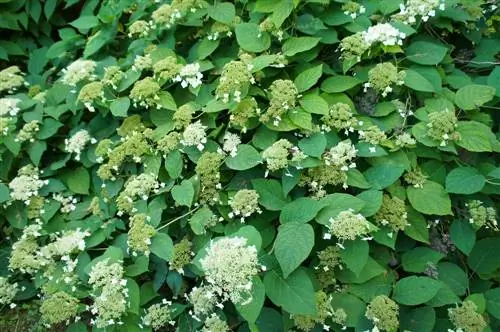- Author admin [email protected].
- Public 2023-12-16 16:46.
- Last modified 2025-06-01 06:02.
Ivy doesn't always have to be used to add greenery to walls and house walls. The creeping spindle proves to be an attractive alternative for various reasons - both visually and in terms of care! Here's a brief overview.
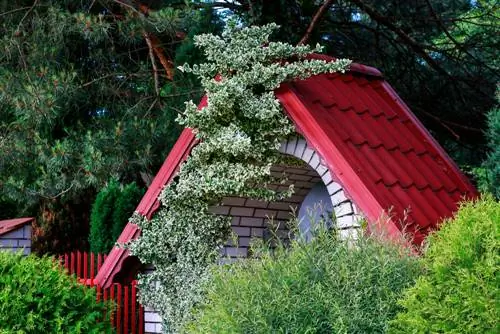
Why is the creeper a good climbing plant?
The creeping spindle is an attractive alternative climbing plant that thrives in the shade, is undemanding and provides decorative greenery for walls and house walls. It grows slower than ivy and requires little pruning, is hardy and produces beautiful fruits.
The creeping spindle - a real crawling artist
In general, the creeping spindle is used more as a ground cover - but it also has great properties: Although it grows slowly, it forms a dense cover of plants and roots that weeds have no chance against. It also thrives well in the shade and places little demands on the soil. In addition, with its often variegated leaves and cheerful, small, whitish to reddish fruits, it offers a beautiful ornament for natural gardens.
The advantages of the creeping spindle:
- also thrives in the shade
- relatively undemanding to other site conditions
- beautiful decorative value due to leaf coloring and fruits
Climbing Arts
But what also sets the creeping spindle apart, as its name suggests, is its ability to crawl. And it can not only crawl horizontally, but also vertically. This applies at least to some varieties that, when given the opportunity to climb, develop adhesive roots with which they can pull themselves up. This means they can also be used well as green walls. For this purpose it offers some advantages:
- Slow growth - no risk of rapid overgrowth
- Very decorative due to leaf structure and fruits
- hardy - i.e. permanent greenery in winter
Little pruning necessary
The slow growth of the creeping spindle has the advantage, compared to the somewhat very dominant ivy, that even after years there are no thick woody strands to be expected that can hardly be removed from walls without damaging them. It also requires less pruning when greening pergolas etc.
However, the creeping spindle needs to be cut regularly - but only a little and only if you want flat greenery. Without cutting, the creeping spindle becomes increasingly bushy. If you want to keep the creeping spindle wall vegetation flat, you can keep it under control on the surface once in spring - in addition to removing long, sideways and bare shoots, you also remove the dried ones.
Trail for better shaping
A climbing aid (€17.00 at Amazon) is also recommended for well-maintained creeping spindle greenery. It gently guides the plant into the desired shape and prevents it from growing too wildly. You can use a classic trellis or a rope mesh.

